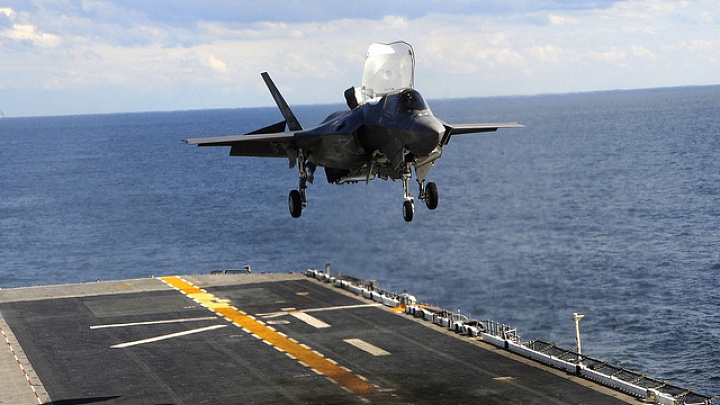
The “special relationship” with America is central to Britain’s national security and America also counts heavily on British diplomatic and military support. In an era of budget “austerity” in Britain and sequestration in America, there is great benefit for both countries when it comes to joint military operations and platforms procurement. The combination of budgetary factors, procurement costs and issues, and the continuing need for air and sea power is why the relationship between the U.S. and UK is so “special” that Britain’s next aircraft carrier, HMS Queen Elizabeth, will likely be home to U.S. Marine Corps F-35Bs American fighters flying from a British warship.
Twenty years ago the Joint Strike Fighter (JSF, now F-35) program came into being. The overall concept held much promise. It was a full-fledged restart of a failed concept of earlier years the F-111 program. Against the backdrop of the Cold War, the idea emerged that a common airframe could be created that would meet the requirements of the U.S. Air Force, Navy, and Marine Corps. All of the benefits of a common airframe, including commonality of parts support, especially for expensive avionics, would reduce per-unit cost while giving both the Air Force and the naval services variants that could meet everyone’s needs, whether landing smoothly on runways in Europe or performing arrested landings on ships at sea.
But the Marines eventually opted out and went the route of the Sea Harrier and proven fixed-wing performers like the F-4 and A-6. The F-111 concept did come to fruition and a variable-geometry strike-fighter was created with nuclear dash capability at supersonic speeds, but it failed its aircraft carrier suitability tests, thus becoming an Air Force-only platform. It seems the F-111 experience was forgotten by designers and program managers of the current JSF/F-35 program. This time, however, it was not just the Navy and Air Force, but also the British and the U.S. Marines who were affected by the high hopes about per-unit cost, commonality, and the answer to everyone’s problems.
Prior to 9/11, a debate emerged inside British defense circles about the next generation of the Royal Navy’s fleet, and it seemed the best template had already proven itself in spades in the post-Cold War world the air
